White Coat Ceremony Marks Entrance to Medical Profession for 146 First-Year Medical Students
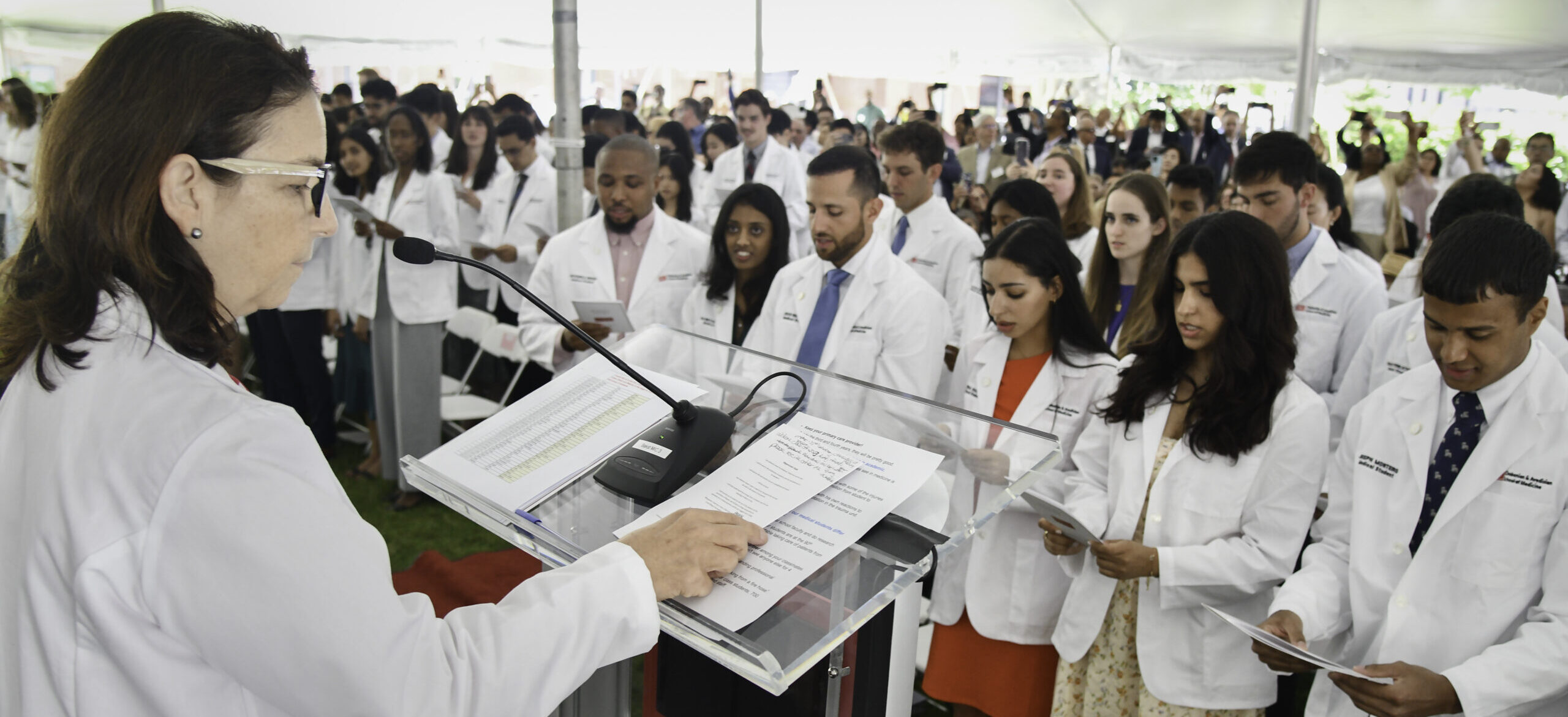
In a tradition marking the entrance of first-year medical students into the medical profession, students, their families, friends, faculty and staff gathered under a tent on Talbot Green for the annual White Coat Ceremony.
Kristen Goodell, MD, associate dean for admissions, presented the 146 members of the 175th entering class of the Chobanian & Avedisian School of Medicine.
“You should know that our shared intention is for you to reach your goals, so that you can set about making the world a better place, “said Goodell.
Organized by the Student Affairs Office, the White Coat Ceremony is both a symbolic rite of passage and one grounded in the reality of hard work and responsibility. Associate Dean for Student Affairs Angela Jackson, MD, told students their white coats are “visible evidence that you are joining this profession, taking your first steps along this path to a demanding, but so rewarding, career in medicine.”
At the heart of medical education is the passing along of knowledge from one generation to the next, and the focal point of the ceremony is the actual coating — when the faculty advisers each student will have for the next four years helps them into their white coat.
“When you put on your white coat for the first time today, the message is that, as of today, you are now already a part of the profession,” said BUMC Provost and School of Medicine Dean Karen Antman, MD.
The class was chosen from more than 10,600 applicants from 30 states, representing 65 undergraduate colleges and universities. Ranging in age from 20 to 34 years old, the entering class speaks 22 different languages – 86% speak more than one language — and 17% are from groups underrepresented in medicine.
“In cultural, social, economic, racial, ethnic, gender identity, educational and linguistic terms, and in your life experiences, you define the pluralism that we so value on this campus and which is so central to our society,” said Goodell.
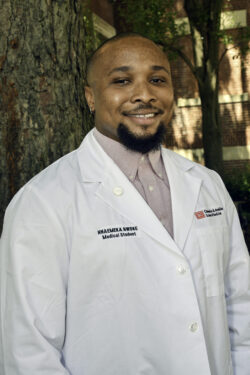
Putting on the white coat embroidered with his name was an emotional moment for Nnaemeka Nwoke who wiped away tears as he walked back to his seat.
“I’m still processing that this is a reality,” he said. “To have gone through all the nitty gritty details and overcome all the challenges and obstacles and persevered, this literally means the world to me.”
Originally from Nigeria, Nwoke moved to Tampa, Florida, in 2014 to attend the University of South Florida (USF), graduating in 2018. He’d wanted to become a physician since age 10 and worked at USF’s medical school and a private neurology practice before gaining admission to BU.
“One of the things that stood out was that BU is truly focused on teaching us how to care for people of all walks of life regardless of race, gender, sexual orientation or socioeconomic status,” he said.
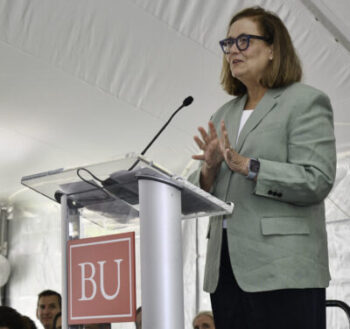
That view of health equity was espoused by guest speaker Massachusetts Secretary of Health and Human Services Kate Walsh, MPH, the former president and CEO of Boston Medical Center (BMC) Health System.
“We have a mandate to use our privilege to change and improve our healthcare system,” said Walsh. “We need this entire generation of doctors to go beyond the traditional boundaries of medicine to create a healthier, more equitable world.”
Walsh urged the medical students to do the research that cures disease and alleviates suffering, to engage and eliminate disparities in health outcomes due to race and ethnicity, and to understand and address factors that cause poor health.
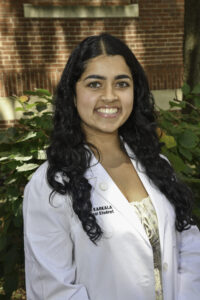
Ekta Karkala from Union City, California, said she was drawn to the school because of its social mission and that of BMC, its primary teaching affiliate.
“We provide for a lot of underprivileged and underserved communities and I think it’s a really beautiful mission and I’m really grateful to be a part of it,” she said.
Goodell described the varied paths students had taken to arrive on this day, especially given the reality of a pandemic that shut down research labs and other traditional avenues while making the remaining healthcare opportunities more dangerous.
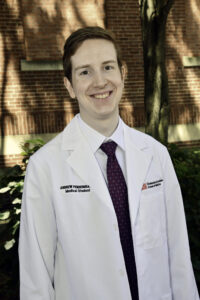
Andrew Pendergrass graduated from the University of Washington in 2017, then worked as a nursing assistant at a safety net medical center in Seattle during the COVID-19 pandemic.
“It was a bad time to be in the hospital,” he said. “The fact that I was still getting energy from going to work and getting a lot of fulfillment from doing it and enjoying being around patients despite the conditions was something that gave me confidence in moving forward.”
See the Facebook album.